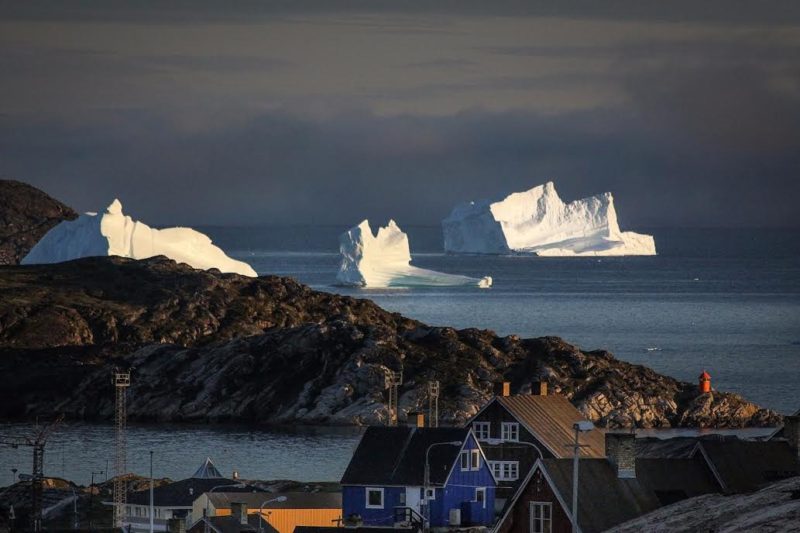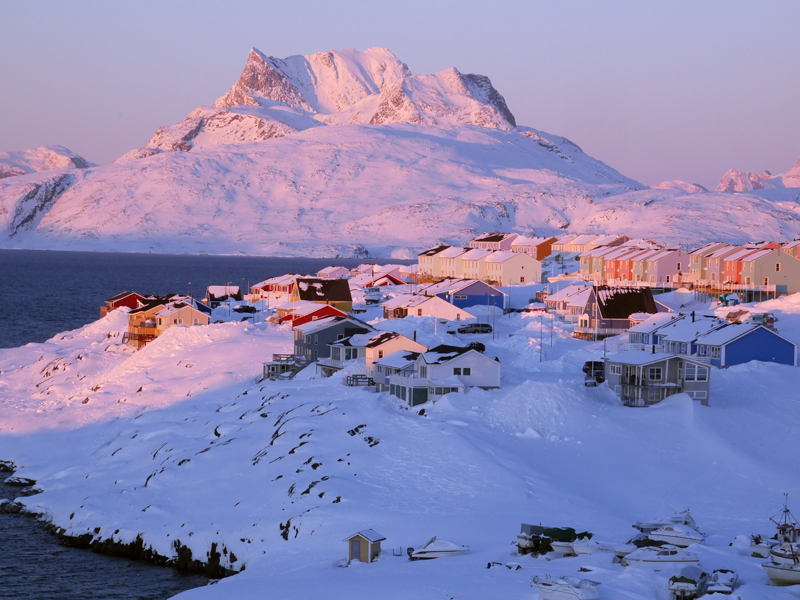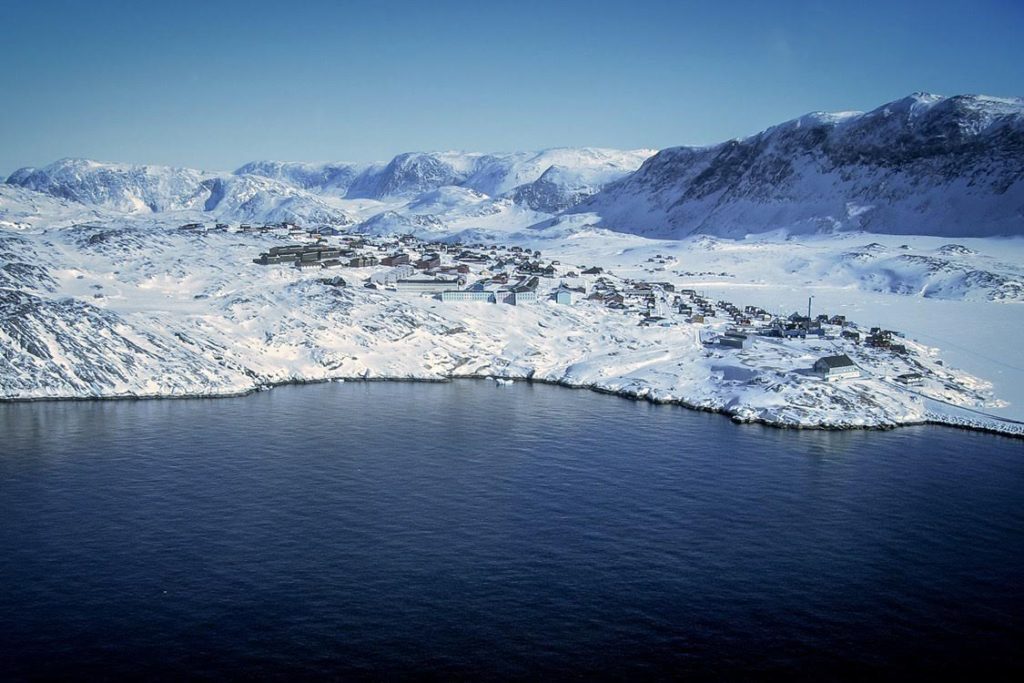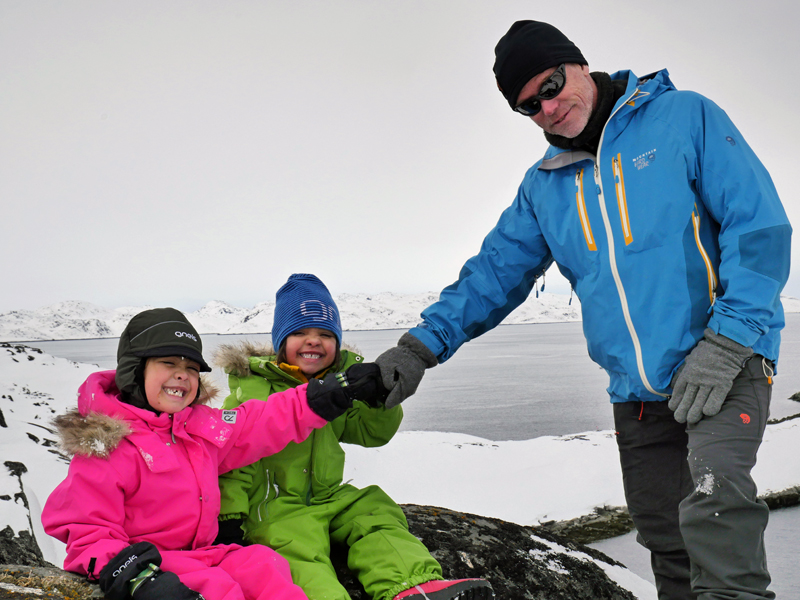Working title:
Man With A Family (Greenland)
Background:
I have spent a lot of time the last 30 years trying to figure out the meaning of life. I still don´t know where I belong and I have travelled the world trying to figure it out. What I do know is that I have always felt most comfortable when I have lived in areas where people still haven´t ended up in the furious pace of the so called modern world, where people are mainly urbanized and work day and night to survive and keep up appearances. I am talking about areas which are home to indigenous people, who still seem to care without demanding anything in return. Here socializing and being part of the community is most important. I believe a lot of the understanding of the meaning of life is an integral part of this life.
Idea:
For this reason, I want to bring my two daughters, Eva 7 and Dana 5, and my wife to one of the most isolated places on earth who correspond with my thoughts about the meaning of life, Qasigianguit, located far up north on the west coast of Greenland. In this settlement, the midnight sun rules the summer and an almost complete darkness is prevalent during a few cold months of winter each year. I want to spend a year in this community of 900 of mainly Inuit fishermen and hunters who still understands the symbiosis of human and nature. I feel it is important that my daughters get an insight into this existence before IPAD:s and a career in the big city takes over their lives. Of course they will go to school here and I want to document how they as city girls find this new life.
As important to me is to document how the villagers are dealing with on one side being part of an old hunting and fishing society and on the other side assimilating into an encroaching modern society. Internet, a shop, school, church, a small hotel and modern structure is already here. There´s a helicopter from Ilulissat at least twice a week if weather allows. It is still a very isolated community. In the last twenty years the settlement has lost half its population due to that people have moved to the towns further south in search of a new life, better job and more possibilities. This means that together with the bad self-confidence developed after almost 300 years of colonization and the stresses of adapting to the modern society is strong in these settlements. In its destructive tracks there are feelings of hopelessness, unemployment, alcohol, drugs, domestic violence and not finishing school. And a feeling of not belonging anywhere. What kind of a future is awaiting them? How do they see the meaning of life? Will their settlement die and vanish as others have before them? And what does our own future look like? What do we call home? Who are we really?
Qasigianguit is also right in the middle of the major global climate change which is taking place at the moment. The settlement is a neighbor of the glacier, Sermeq Kujalleq, which today is the fastest glacier in the world, moving 40 meters every day and calving around 50 cubic kilometers every year. If this amount would melt in an instance, it is equivalent to the total water consumption of the US in one year! So for this reason, scientists from all over the world make their way here to keep a close eye on the developments. It turns out it is worse than we thought. Scientific data shows that temperatures globally is 6-7 degrees C higher the recent years, which means that the permafrost and icecap is melting at such a fast rate that in a thousand years all ice will be gone on Greenland and the level of the sea would have risen 7 meters! But even at this precise moment, just raising the sea level half a meter is a catastrophe, not only for local people in Greenland, but for the whole world, especially the less advantage people.
The ongoing climate change is already influencing life for the local people due to abrupt new weather patterns which have on one side made it harder to hunt and fish like in the old days, it is much more difficult to predict weather and winds are getting worse. But on the other hand it has offered almost yearly ice free harbors, which makes it easier to fish and to receive goods from the outside and it has introduced new fish species for consumption. We want to be here during this dramatic time to document reality and see how it influences the local people and their lives. And maybe, even the rest of the world in a nearby future. Is global warming really as bad right now as scientists say? To find out Pam and I will do repetitive journey´s along the coast and on the icecap together with local people to observe, take measurements and photos and use local Inuit memory and knowledge to draw some sort of a conclusion. It will be an ongoing project for years to come.
Start: August 2017, Qasiguianguit 2017, 12-18 månader
Documentary 58-120 min
How will I tell the story: I will tell two parallel stories. One about our time and life in Qasigianguit and documenting the lives of the local people in these times of climate change. Secondly about advanced travels in the surroundings, dog sledding, kayak, skiing. Since we will stay at least a year, it will be a natural A to B story. When will be able to stay a year here? Will we make it back over the icecap?
Technique: I have two 4 K cameras, 2 Gopros, 1 Iphone 6s, three different tripods, microphones of all kinds and I will use what is needed to get very close to people and getting the bigger shots. All done together with my editor and co-producers.
Travel mode: From Nuuk to Qasigianguit will either be done by skis, dog sled, kayak or rowing boat. We will cross the ice cap at least one, most likely twice, with dog sleds.




